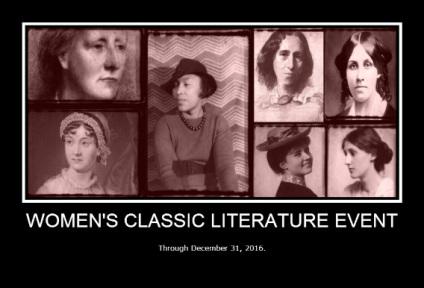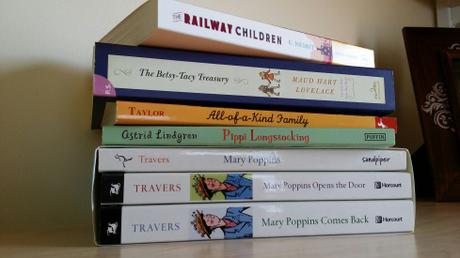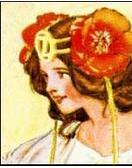 I haven’t done anything this year for the Women’s Classic Literature Event, which is hosted by the Classics Club, but since it’s September and it’s Back to School time, I was thinking about re-reading favorite classics by women authors. I’m looking specifically at books published before 1950 and in about the 8-10 age range.
I haven’t done anything this year for the Women’s Classic Literature Event, which is hosted by the Classics Club, but since it’s September and it’s Back to School time, I was thinking about re-reading favorite classics by women authors. I’m looking specifically at books published before 1950 and in about the 8-10 age range.
When I thought about this challenge months ago, the authors who came to mind were P.L. Travers, who wrote the Mary Poppins series, Astrid Lindgren, who wrote Pippi Longstocking, and E. Nesbit, who wrote Five Children and It and The Railway Children.
I also thought about classic non-fantasy authors like my favorite, Frances Hodgson Burnett. But then if we’re going down the realistic fiction route (a whole different banana from fantasy) there’s plenty to choose from. There are the American authors like Laura Ingalls Wilder, Lois Lenski, Carol Ryrie Brink, and Louisa May Alcott. Although I have to admit I never warmed to Little Women.
There’s Maud Hart Lovelace, who wrote the Betsy-Tacy series, Noel Streatfeild who wrote Ballet Shoes, and Marjorie Kinnan Rawlings, who wrote The Yearling, a book I’ve never read. As a child, I liked the All-of-a-Kind-Family because it was about a Jewish family. I also loved Heidi. Hiking in the Alps, tending goats, and eating bread and cheese always struck me as terribly romantic for some reason.
I’ve read Anne of Green Gables, but as an adult, not as a child, and only the first one. I’ve never read Rebecca of Sunnybrook Farm, and I’m curious how those two books differ.
A favorite of mine was Betty Macdonald, who wrote Mrs. Piggle-Wiggle, but I decided she doesn’t rise to the level of classic literature (sorry Ms. Macdonald). Same with Carolyn Haywood, who wrote a series called B is for Betsy, which I adored for its simplicity, even though it wasn’t great literature (it was my version of Pleasantville; I think there are times if I could have stepped into that world I would have).
Which makes me realize how hard it is to separate my personal feelings about what I loved as a child from what makes children’s books great. Some children’s books grab you and never let you go. Others (and for me those include Narnia, Little Women, and Little House) may have great literary merit, but you just never see yourself inside their pages.
I had a great time talking about this project in my favorite children’s bookstore, Hooray for Books! A very helpful staff person pointed out a few things I should think about. One is the fact that a lot of these classic novels have problematic racial issues, particularly the American “frontier” novels like Little House and Caddie Woodlawn, in their treatment of Native Americans, and Pippi Longstocking in its treatment of Pacific Islanders. In fact, they only carry the first Pippi Longstocking book because the later ones (Pippi in the South Seas) are considered too problematic. And those are just a few examples. Of course, classic literature is full of racist and other (such as anti-Semitic) references. It’s important, I think, to read these works considering the times in which they were written, but also to be thoughtful about what they are saying and how they could have said it better. Thoughts?

I know I’m missing plenty of great writers. Which are your favorites? Which would you read for a challenge like this? Feel free to join in!

